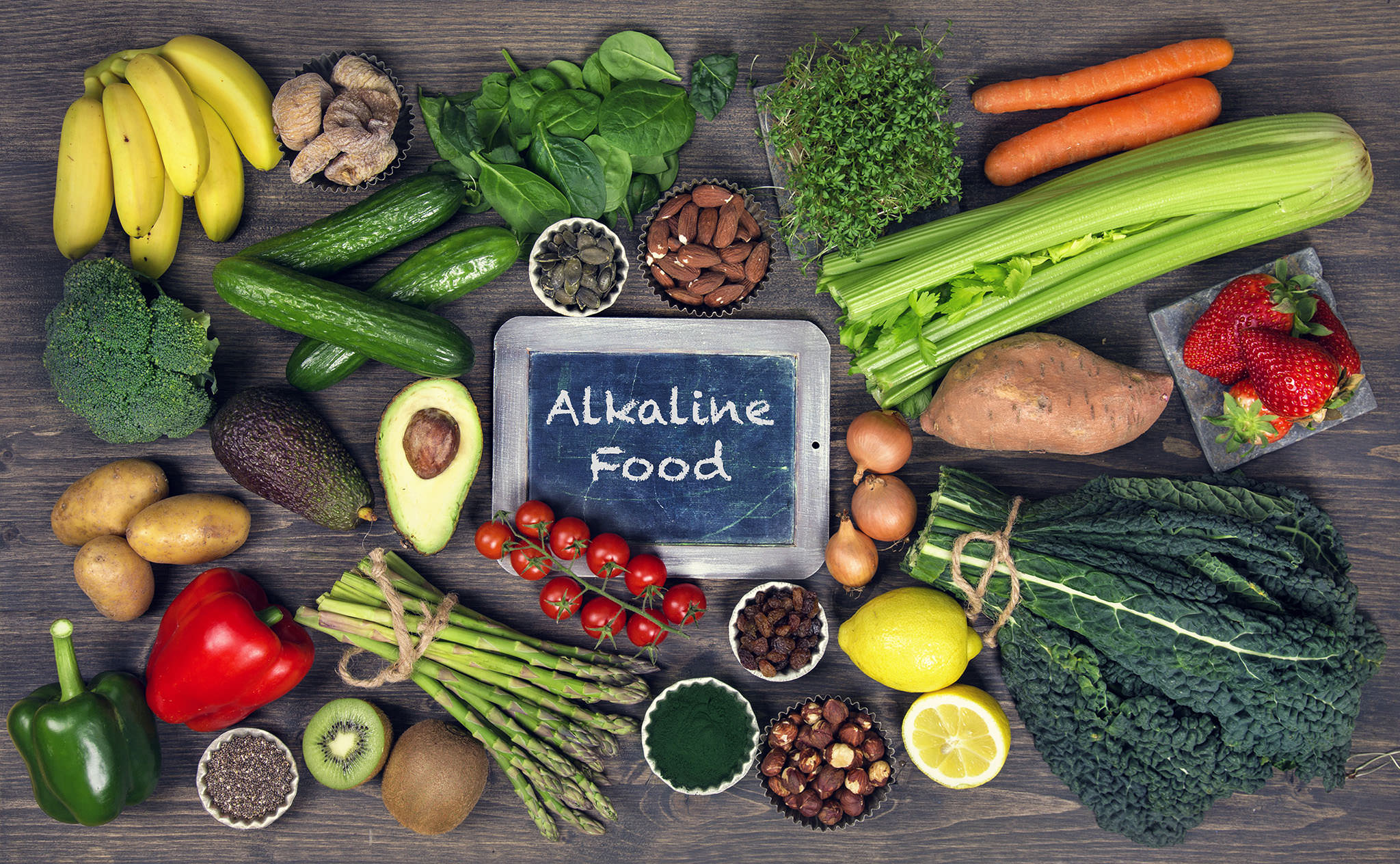The pH Story
An Alkaline Diet Can Relieve Health Problems
It is now becoming increasingly evident that an alkaline diet can relieve myriads of health problems. Maintaining an acid alkaline balance is vital to our health, and knowing exactly which foods to eat and which foods to avoid is absolutely critical to living alkaline.
There is so much confusion and conflicting information out there on which foods are acid and which are alkaline, so we have created The Definitive Acid / Alkaline Food Chart to make sure you don’t get the wrong information and accidentally start eating acid-forming foods!
Becoming Alkaline
This is not as difficult or as technical as it sounds. When we talk about eating alkaline foods or starting an alkaline diet we are referring to consuming those foods and drink which have an alkaline effect on the body. This effect is based upon the ash residue that remains after our foods are consumed. Some foods leave an acid ash, whereas others leave an alkaline ash. Conveniently for us, our bodies have been designed to categorise which foods leave which kind of ash into neat and easy to remember groups. Of course, everybody is different – but most of us should aim to eat 75-80% alkaline forming foods and a maximum of 20-25% acid forming foods.
Highly Alkaline
| pH 9.5 Alkaline Water |
Himalayan Salt |
Grasses |
Cucumber |
| Kale |
Kelp |
Spinach (Baby and Grown) |
Parsley |
| Broccoli |
Sea Vegetables (Kelp) |
Green Drinks |
All Sprouted Beans |
| Sprouts |
|
|
|
Moderately Alkaline
| Avocado |
Beetroot |
Basil |
Capsicum / Pepper |
| Cabbage |
Celery |
Chives |
Collard / Spring Greens |
| Coriander |
Endive |
Garlic |
Ginger |
| Green Beans |
Lettuce |
Mustard Greens |
Okra |
| Onion |
Radish |
Red Onion |
Rocket / Arugula |
| Tomato |
Lemon |
Lime |
Butter Beans |
| Soy Beans |
White Haricot Beans |
Chia / Salba |
Quinoa |
Mildly Alkaline
| Artichokes |
Asparagus |
Brussels |
Sprouts |
| Cauliflower |
Carrot |
Courgette / Zucchini |
Leeks |
| New Baby Potatoes |
Peas |
Pumpkin |
Swede |
| Squash (Butternut, Summer etc) |
Watercress |
Grapefruit |
Coconut |
| Pomegranate |
Rhubarb |
Buckwheat |
Lentils |
| Tofu |
Goat & Almond Milk |
Herbs & Spices
(Thyme, Mint, Ginger, Cumin etc.) |
Avocado Oil |
| Olive Oil |
|
|
|
Neutral/Mildly Acidic
| Black Beans |
Chickpeas / Garbanzos |
Kidney Beans & Other Beans |
Seitan |
| Cantaloupe |
Fresh Dates |
Nectarine |
Plum |
| Sweet Cherry |
Watermelon |
Millet |
Oats / Oatmeal |
| Spelt |
Soybeans |
Buckwheat Pasta |
Cous Cous |
| Brown Rice |
Rice / Soy / Hemp Protein |
Freshwater Wild Fish |
Rice & Soy Milk |
| Brazil Nuts |
Pecan Nuts |
Hazel Nuts |
Sunflower Oil |
| Grapeseed Oil |
|
|
|
Moderately Acidic
| Fresh, Natural Juice |
Ketchup |
Mayonnaise |
Butter |
| Apple |
Apricot |
Banana |
Blackberry |
| Blueberry |
Cranberry |
Grapes |
Guava |
| Mango |
Mangosteen |
Orange |
Peach |
| Papaya |
Pineapple |
Strawberry |
Goat’s Cheese |
| Vegan Cheese |
Rye Bread |
Wheat |
Wholemeal Bread |
| Wild Rice |
Wholemeal Pasta |
Ocean Fish |
|
Highly Acidic
| Alcohol |
Coffee & Black Tea |
Fruit Juice (Sweetened) |
Cocoa |
| Honey |
Jam |
Jelly |
Mustard |
| Miso |
Rice Syrup |
Soy Sauce |
Vinegar |
| Yeast |
Dried Fruit |
Beef |
Chicken |
| Eggs |
Farmed Fish |
Pork |
Shellfish |
| Cheese |
Dairy |
Artificial Sweeteners |
Syrup |
| Mushroom |
|
|
|
Test Your pH
A easy way to help know your body pH is using the the self test pH strips. First urine in the morning can be tested and recorded and a log can be maintained to see where the body ph stands. You can use the food chart to help move towards a more alkaline food diet. An acidic diet will manifest in the mouth as propensity to white spot decalcified lesions which eventually for cavities.
ALKALINE FOOD TIPS
- A simple way to shift the pH is lime/lemon water sipped throughout the day! Lime / lemon has high mineral content so has a alkalizing effect.
- Fruits have a high sugar content which makes them acidic so limit the amount consumed.
- Replace soy sauce to Bragg liquid aminos.
- Stay well hydrated.
- Cut on tea / coffee.
- Limit bread, and switch to sprouted variety when possible.


